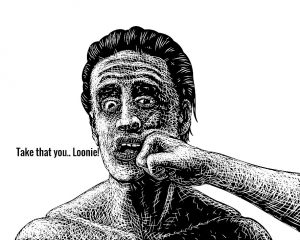By Michael O’Neill, Senior Analyst Agility Forex
The pomp and pageantry that will be Mr. Trump’s inauguration doesn’t include any fireworks. That’s because they have already occurred. US 30-year Treasury yields have risen to over 3.0%. Equity markets have been printing record highs, almost daily, until just recently. The US dollar has soared against the G10 currencies. Only the Canadian dollar managed a gain against the US dollar and that was tiny and due to a rise in oil prices.
In 1961, the youngest man ever to be elected President, 44-year-old John F. Kennedy took the reins of power from 70-year-old Dwight D. Eisenhower and ushered in what has come to be known as the “Age of Camelot”. It was a time of hope and renewal. It was also a clear case of “out with the old, in with the young”.
In 2017, seventy-year-old Donald Trump becomes the 45th President of the United States, replacing 55-year-old Barak Obama. Out with the young, in with the old’.
The 21st century version of the “Age of Camelot” is the “Time of Tweety”.

Ronald Reagan was known as the “Great Communicator”. Donald Trump will be known for his twitter account.
Mr. Trump has tweeted 34,300 times and has 20.3 million followers on Twitter. One of them appears to be China.
They do not appear to be too thrilled about conducting foreign policy in 143 characters or less, which is understandable, considering that China uses 25,000 characters in their writing. Trump has tweeted that China is a currency manipulator and has threatened to impose tariffs.
He tweeted to BMW that he would impose a 35% import tax if they built cars in Mexico, meant for sale in the US. He tweeted that same threat to General Motors and they backed down. He is still planning to build his Mexican Wall, and get rid of Obamacare.
Mr. Trump may be the loosest of cannons wreaking havoc in financial markets, but he is not alone. Far from it.
A dove no more?

Is this the end of the Fed Chair as a dove? Photo: Shutterstock
Janet Yellen, Chair of the US Federal Reserve is considered a ‘dove” due to her cautious approach to monetary policy management and her seemingly reluctance to raise interest rates.
On Wednesday, cautious Janet Yellen indicated to the Commonwealth club of San Francisco that the federal funds rate would be close to its “longer-run neutral rate of 3 percent by the end of 2019”.
That statement opened some eyes. The 3 percent level represents nine, quarter-point rate hikes in the next 35 months. It is also an admission that the Fed is ditching their long-held policy of keeping short-term rates low for a long time.
Financial markets were still getting their heads around the shift in the 2017 dot-plot forecasts from two rate increases to three. Now it appears that three rate hikes per year are the base case.
The expected pace of US interest rate hikes will keep traders on their toes for the next few months
The British bulldog barks

UK barks at EU and say’s “We Quit” Photo: Shutterstock
The wait is finally over. On Tuesday January 17, UK Prime Minister Theresa May unveiled Britain’s Brexit strategy. She’s gone all-in. It will be a “hard Brexit”.
Ms. May outlined twelve priorities for the EU negotiations. They included; regaining control of borders, ending jurisdiction for the European court of justice and leaving the customs union. She also committed to giving both houses of parliament a vote on the final deal.
What she didn’t do was trigger Article 50 which under the Treaty of Lisbon is the official acknowledgment of the UK’s plans to leave the European Union. That is supposed to happen by the end of March 2017.
Article 50 will be like the puck being dropped for the first period of the first game of a full NHL season. At the beginning, there will be a lot of fanfare in Britain and Europe and then the players will dig in for a long grinding season (session) which could last two or more years.
The countdown to March 31st has already begun
Loonie gets sucker-punched

The Loonie took a sucker-punch to the beak Photo: Shutterstock
No one expected any surprises from the Bank of Canada policy meeting on Wednesday and there weren’t any. The BoC left the target for the overnight rate at 0.50 percent. The Monetary Policy Report upgraded the US growth outlook which led to a tiny uptick in the domestic forecast. The statement and MPR pointed out that the projections were largely unchanged from October and they emphasized the downside risks to the forecast.
It was a ho-hum report on a ho-hum day with traders more concerned about Trump tweets and the Presidential inauguration on January 20.
Canadian dollar demand was clear following the “as expected” statements and it was headed toward 0.77 cents.
Then, the Loonie got sucker punched. It was a full-on, blind-side shot to the beak that knocked the beleaguered bird to its tail-feathers and it was delivered by BoC Governor Stephen Poloz.
When asked if a rate cut was discussed in the meeting, he replied “Yes, a rate cut remains on the table”. The Canadian dollar tanked and is now targeting 0.74 cents.
The BoC is concerned about the level of inflation which was lower than expected in October. Cutting interest rates is supposedly a text-book ploy to increase the inflation rate although the bankers at the Bank of Japan and the European Central Bank don’t appear to be having much luck with that strategy.
However, talking about interest rate cuts serves another purpose. It tends to weaken a nation’s currency. What better time to raise deflation concerns when your largest trading partner is talking up protectionist trade practices which if implemented could decimate an already fragile economy.
The loose cannons may have shot off fireworks ahead of the inauguration, however they don’t appear to be done. In fact, their actions may have just been the opening salvo to several pyrotechnical displays in the days ahead.





